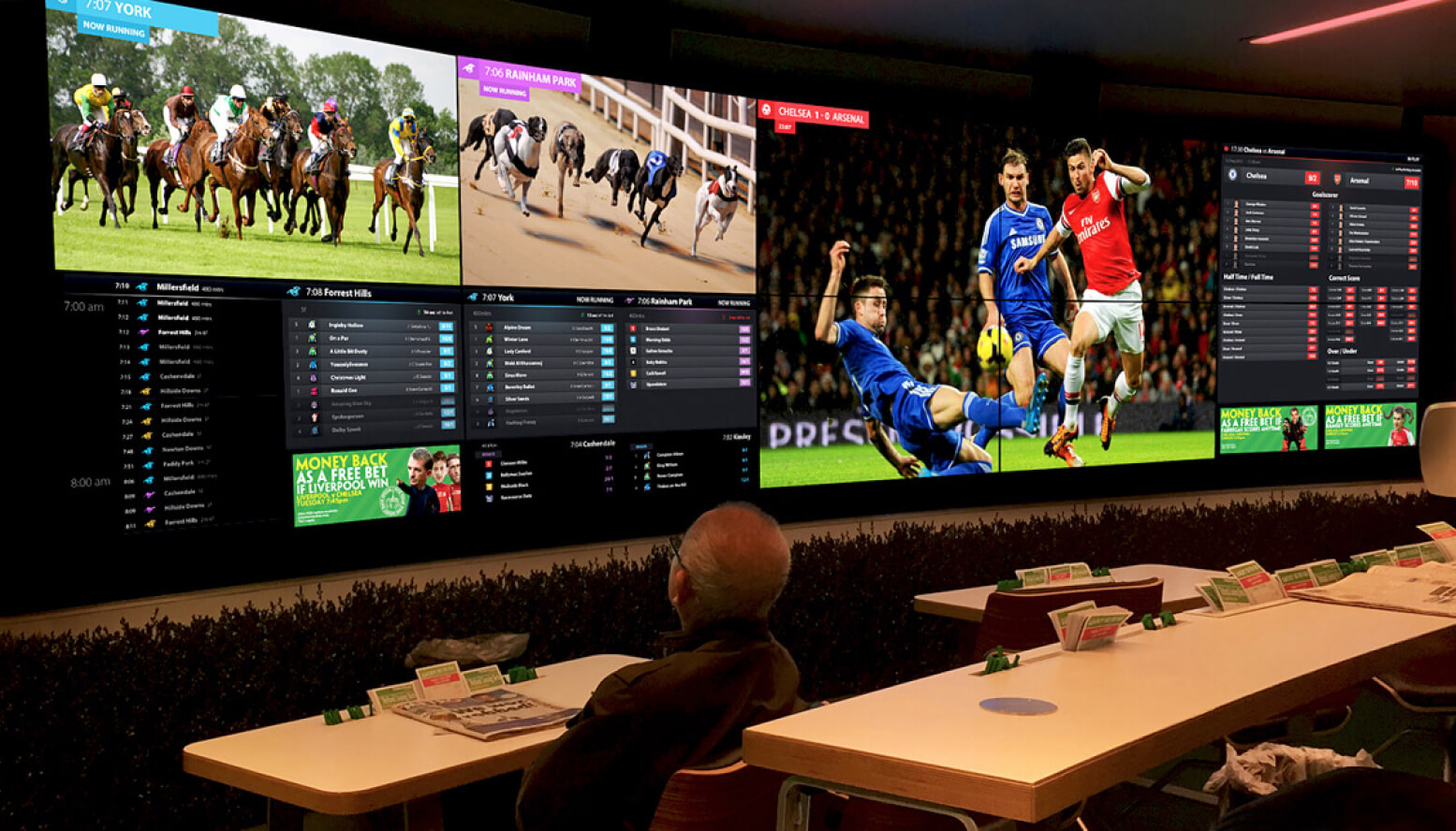
In late 2015, Paddy Power Retail in Ireland and the UK wanted to bring the dated retail screens experience in betting shops up to date. The hardware, screen content and content design were inconsistent and the customer experience was varied. At the time, Irish Retail had rolled out a new screens concept to a small number of test shops in Dublin while UK Retail had begun an outsourced process with a third party agency to refresh the screens in the UK. I was tasked with putting together an in-house team sourced from the product design team to research, design, test, iterate and present a third "visionary" screens concept. The two photos below show the screens at the time the project began.


The initial challenge for the project was the team's limited experience, including my own, with retail screen design and development. Our expertise primarily lay in web, tablet, and mobile platforms, so we recognised the need to swiftly educate ourselves on this new domain. To bridge the knowledge gap, we dedicated the initial week to closely shadowing retail developers, actively seeking their guidance, and proactively reaching out to hardware providers. We shared our learnings with one another and eagerly absorbed any insights available, even if it meant occasionally inconveniencing those in the retail sector. Once we felt sufficiently equipped with the necessary knowledge, we embarked on the project with determination and commitment.
Tony O'Donohoe - Team Lead
Sinead Cochrane - Lead Researcher
Tara Mc Quillan - Senior Researcher
Aisling Mockler - Researcher
Ben Taylor - UX Architect
Damian Bilski - UI Designer
After project brief reviews and stakeholder interviews were complete we spent in excess of fifty hours in both Paddy Power and competitor retail shops. Detailed observations were captured regarding the customer actions and behaviours while using the screens. Customers who displayed active engagement with the screens were then interviewed. We identified motivations for watching the screens and pain points.
The team then did deep-dive analysis which took over ten hours across three research workshops. This enabled us to make sense of the research and feed the results into an initial design workshop with a wider team of stakeholders and key retail members to identify the project goals. The following goals were identified and agreed.
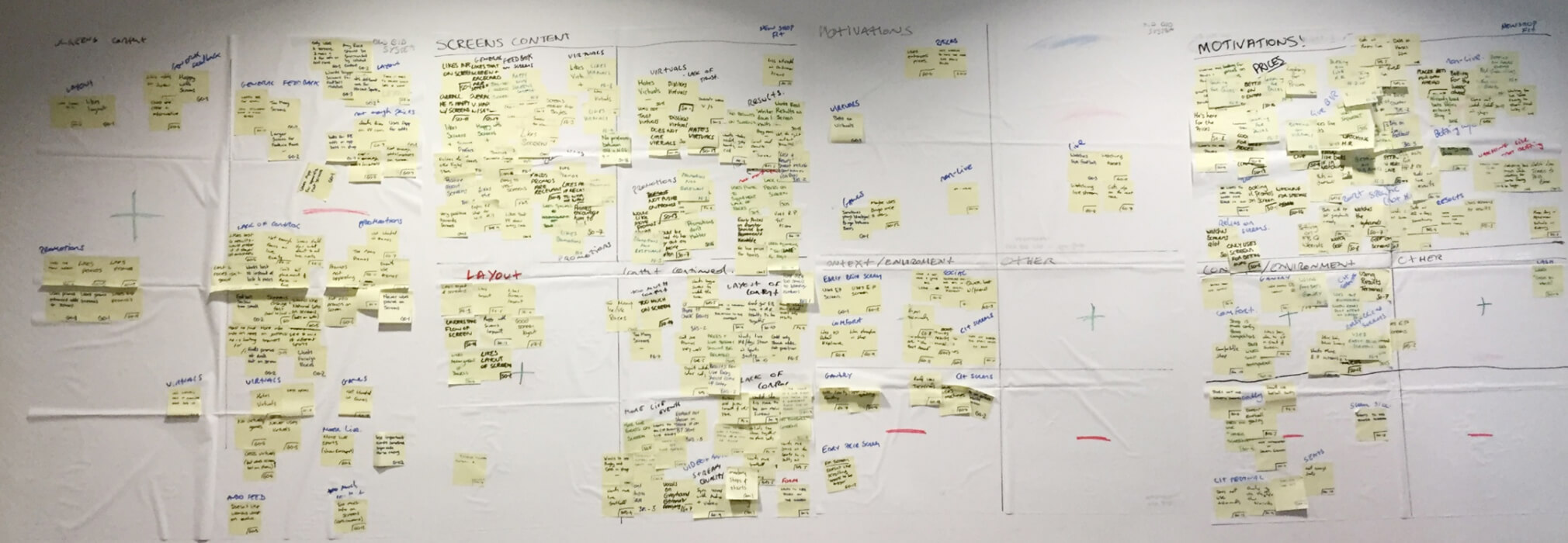

After gaining unanimous agreement from all stakeholders regarding the overall project design goals and ensuring that we accurately captured the input of our customers during the initial workshop, we proceeded to create low-fidelity sketches for testing. To foster collaboration and gather diverse perspectives, we organised a co-creation workshop involving our team, stakeholders, and key members from the retail teams.
Given the nature of our design requirements, traditional pen and paper methods were not feasible. We needed a larger canvas to work with, so we sourced magic whiteboards and secured the largest room in the building for the workshop. To ensure comprehensive participation, we divided the workshop into four groups, ensuring that each team consisted of representatives from customers, stakeholders, key retail personnel, and either UI or UX experts. The workshop allowed us to effectively generate ideas, leverage the collective expertise of the participants, and explore different perspectives. The outcome was a valuable starting point with two viable design directions to further refine and evaluate.
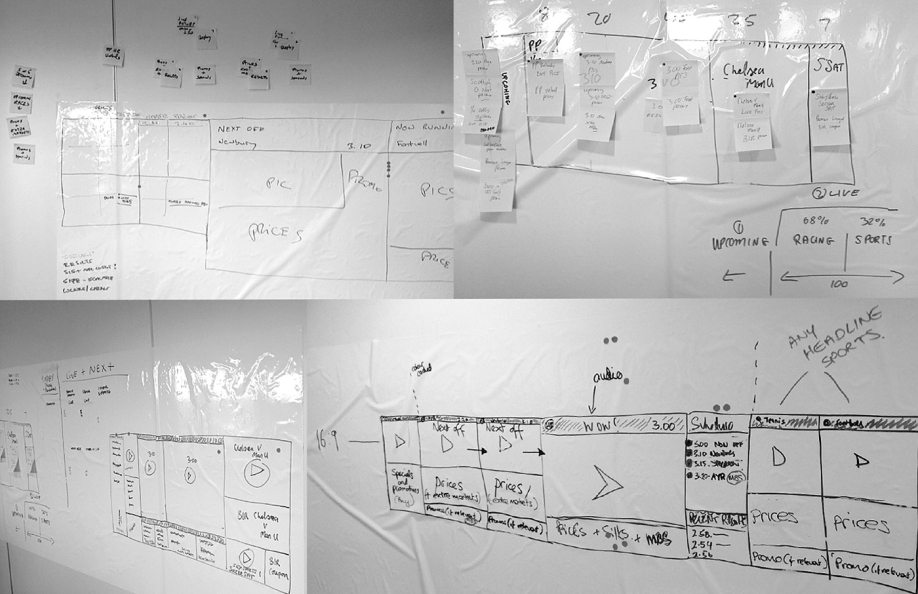
The concepts generated during the co-creation workshop were further refined into low-fidelity wireframes. To validate these concepts and assess their performance against a substantial volume of content, we subjected them to stress testing using real race schedules, simulating a full Friday and a busy Saturday afternoon. This rigorous testing allowed us to evaluate the concepts' viability and identify any potential weaknesses or areas for improvement.
Moving forward, our plan was to conduct user testing with punters. However, this presented a new challenge due to the scale of the screens and the nature of what we were testing. We wanted to gather meaningful feedback that could inform the iteration process towards a more advanced solution. Initially, we briefly explored the possibility of using virtual reality (VR) headsets to create an immersive experience for users. However, due to time constraints, we decided against pursuing this option after examining a proof of concept.
Instead, we opted to use a large projector to display the wireframes on a wall, providing users with an experience that closely resembled real-life usage scenarios. This approach allowed us to approximate the user experience and gather valuable feedback in a more practical and feasible manner.
Additionally, we encountered some time constraints and faced resistance regarding involving customers in the testing process. However, not conducting user testing was not an option. With a large office housing over 2,500 employees, many of whom were punters themselves, it was relatively easy to find unbiased users who could provide valuable insights. Overcoming this challenge, we successfully conducted user testing and ultimately arrived at a final concept for further development.
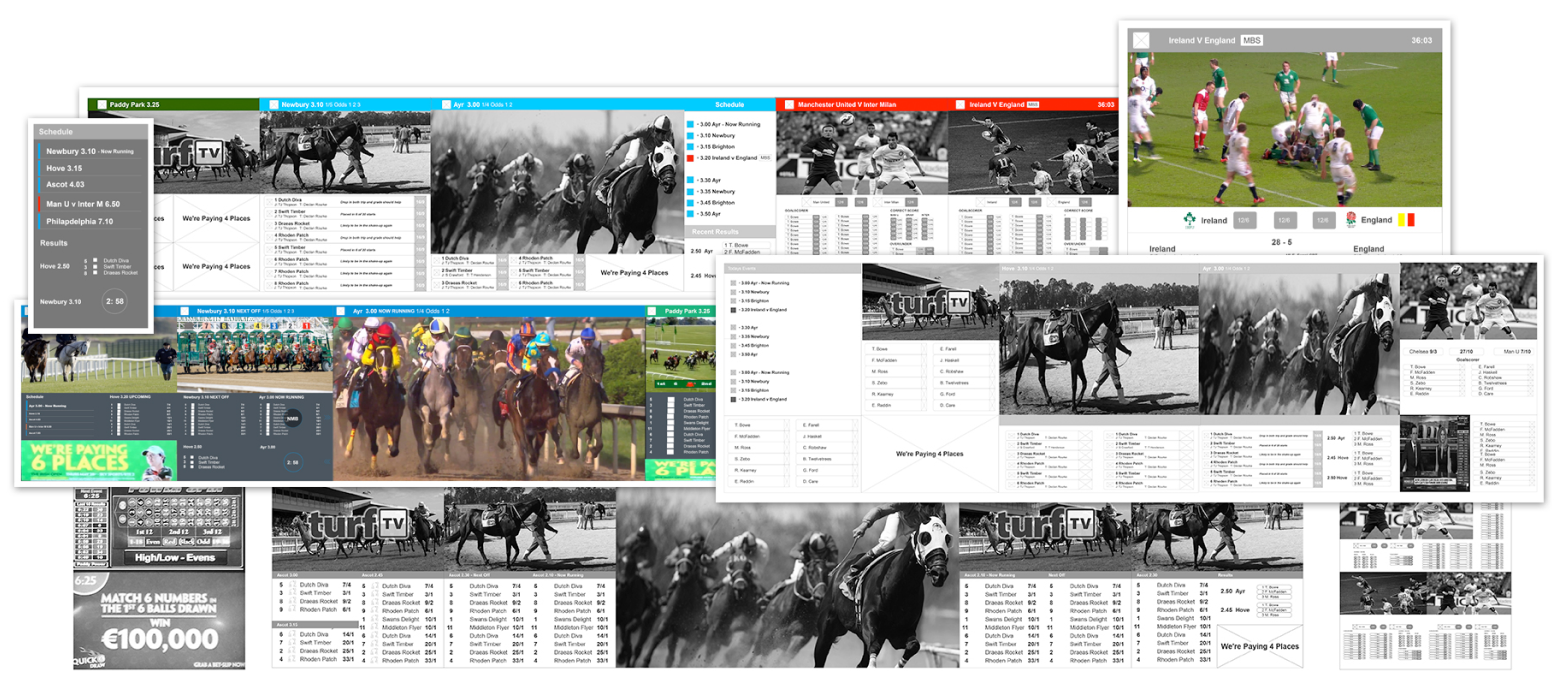
After refining the concepts based on feedback and insights gathered, our focus shifted towards creating a visual design and developing components for the final team presentation. The presentation itself was divided into two distinct parts, each serving a specific purpose.
In the first part, Sinead took the lead and presented our research methods, findings, and their relevance to the project. This allowed us to provide a comprehensive understanding of the insights we gained and how they influenced our decision-making process. By presenting this information, we established a solid foundation for the subsequent parts of the presentation.
The second part, which I led, delved deeper into our design process. We explained how we arrived at the suggested solution by outlining the methodologies and considerations involved. Additionally, we discussed the various iterations and refinements we made along the way. Finally, we unveiled and presented the actual concept itself, showcasing the culmination of our efforts and the proposed solution to the project's challenges.
The division of the presentation into these two parts ensured a clear and cohesive flow of information, allowing us to effectively convey our research, design process, and the final concept to the team.
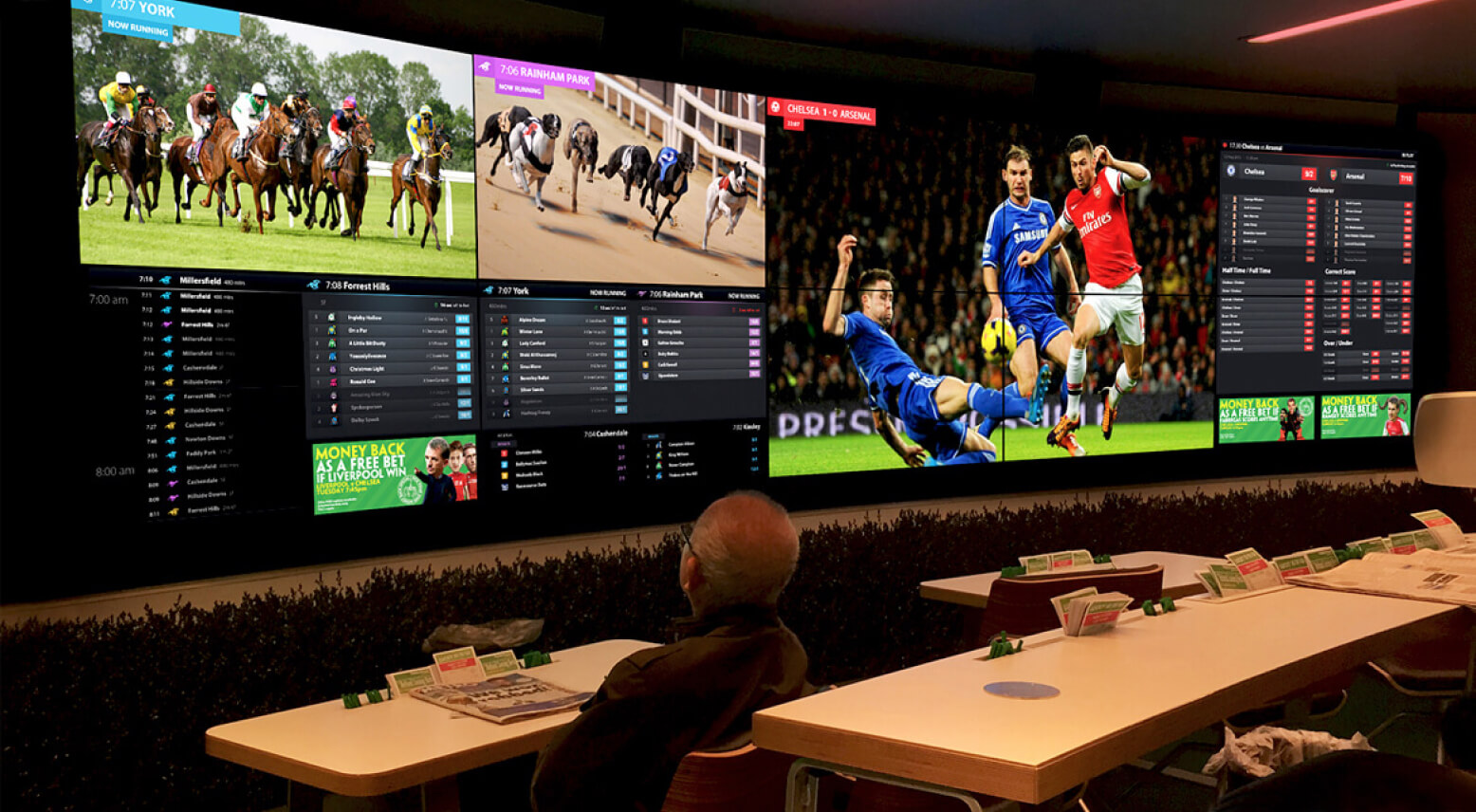


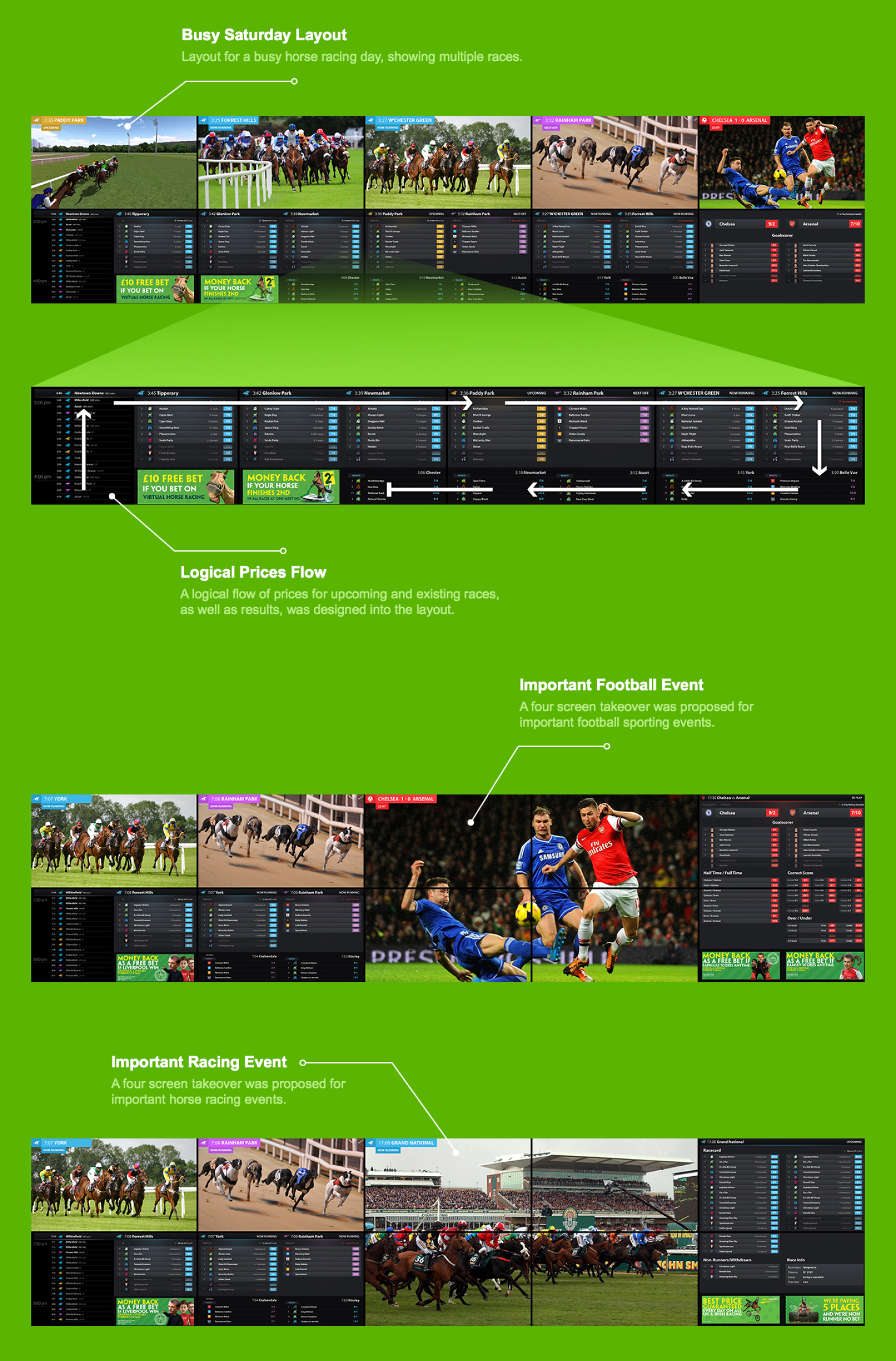
The solution we developed was presented to the heads of retail and the CEO, and it was met with a vert positive reception. However, shortly thereafter, the Paddy Power Betfair merger process commenced, resulting in a pause on the retail screens project.